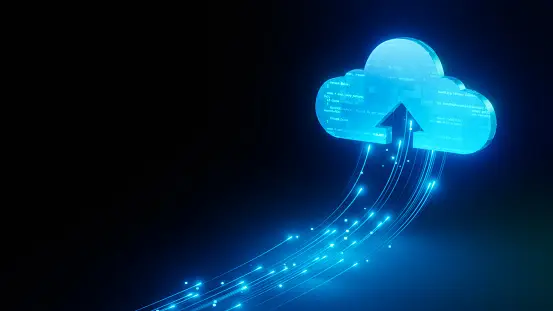
With today's modern surveillance systems there are several options when it comes to recording and storing video. Each has advantages and disadvantages. The right solution for your application depends on many factors which we will discuss in this post. Ultimately the best practice is to use multiple recording systems.
CLOUD:
Some people think the "cloud" is a magical technology that solves all problems. While it solves many problems there is no magic. When you hear the word Cloud, just think remote computer that you pay a fee to use. Instead of having a server or NVR at your location, the software is hosted on a remote computer and you rent space on that server. The fee you pay also includes transferring and storing data on that server. There are 2 main advantages to a cloud based surveillance system.
- You don't have to maintain the hardware. The service provider should allocate the proper resources on the server and maintains the cloud provider is a AWS maintains the hardware.
- As long as a reputable provider is used, your data should be backed up automatically and should any hardware fail, it should be able to restore quickly.
There are some disadvantages too. The cloud server can only receive and store data when there is an active internet connection on the site or premise where the cameras are located. If your internet connection is lost or slows down due to insufficient bandwidth then your camera's ability to transmit video also stops. Another potential downside is that video requires a lot of storage space and so there is a higher cost for video storage than many people are used to. This is a cost you would normally have in the form of hardware maintenance if you used onsite storage but instead of paying upfront for the capacity you are renting the space for a monthly cost.
NVR or ON PREM (on premise)
Having an onsite storage system such as an NVR, DVR, or Server is the most common way to store and process video surveillance data. While there is a definite acceleration to cloud based systems, at the time of this article's publishing "On Prem" is still the most common. You purchase your hardware and or software and then connect to your cameras. When you want to access the data you connect to this device which acts as a video server. This requires special network configuration, port forwarding, or a "cloud connector" service which allows you to access the video remotely. The main advantage is that the video is being stored in the same location as the NVR or server. If the internet connection is disrupted, the video streams will continue to be stored to the on premise device and you can view the streams from within the LAN (local area network) when the internet connection is restored, then remote access to the system will resume.
Here are a list of potential problems
- The storage device hard drives could fail and many systems are not setup properly with RAID storage. If a standard hard drive fails then the data could be lost.
- In the event the NVR is damaged or stolen in the case of fire or theft, then the data is also potentially lost
- You have a higher upfront cost for hardware and software licenses and maintenance to replace drive as well as ongoing software updates
